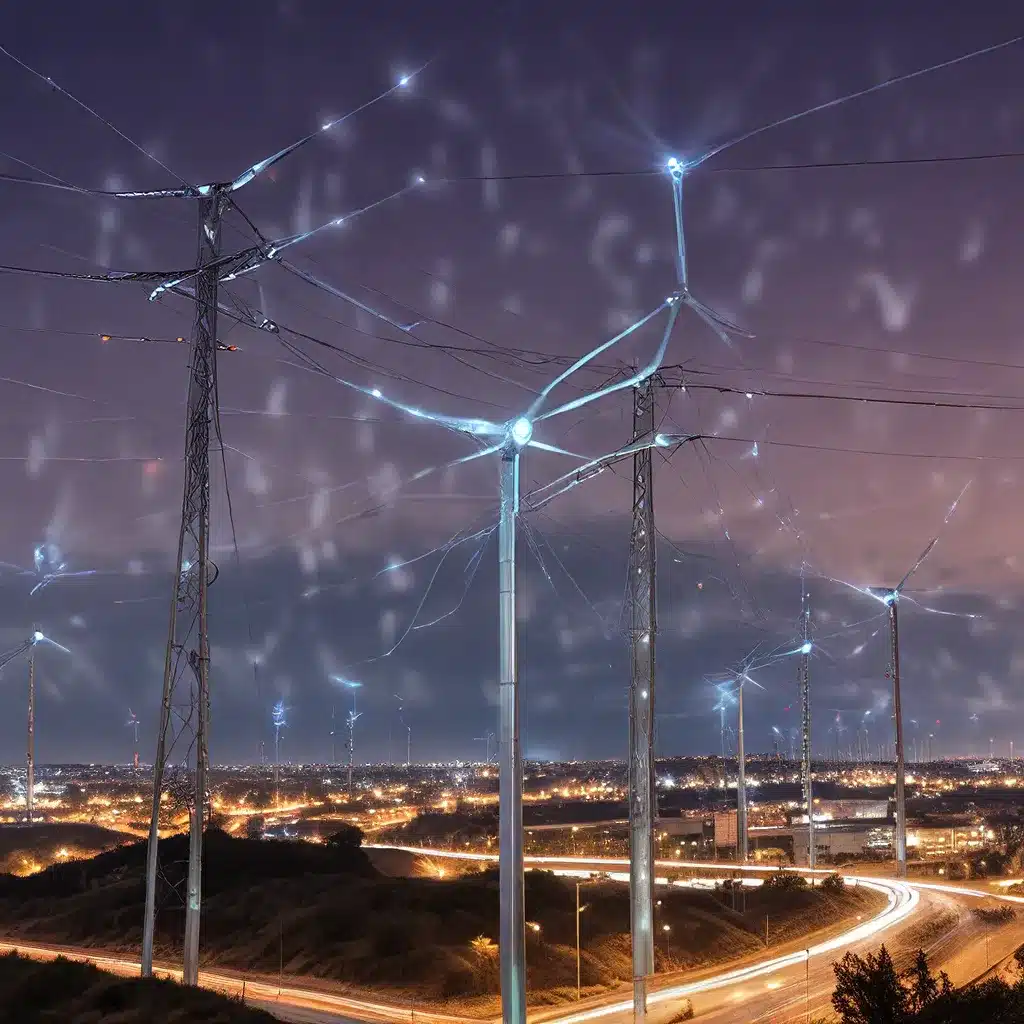
The Internet of Things (IoT) is a transformative technology that has revolutionized the way we interact with our environment. At the heart of this revolution are sensor networks – intricate webs of interconnected devices that collect, process, and transmit vast amounts of data, enabling intelligent decision-making and optimized resource utilization. As the IoT ecosystem continues to expand, the challenge of energy management within these sensor networks has emerged as a critical priority.
Optimizing Energy Efficiency in Sensor Networks
Sensor nodes within IoT networks are often deployed in remote or hard-to-access locations, relying on limited power sources such as batteries or energy harvesting technologies. Ensuring the efficient use of this precious energy resource is crucial for maintaining network longevity and reliability. Researchers and engineers have developed a range of strategies to address this challenge, focusing on optimizing both hardware and software components.
Hardware-based Approaches
One of the primary hardware-based approaches to improving energy efficiency in sensor networks is the development of low-power microcontrollers and integrated circuits. These specialized components are designed to minimize power consumption while maintaining the necessary processing capabilities. Additionally, energy-harvesting technologies, such as solar cells, thermoelectric generators, and piezoelectric transducers, have emerged as promising solutions to supplement or even replace traditional battery-powered systems.
Recent advancements in energy-harvesting materials and device architectures have significantly improved the power conversion efficiency and energy density of these solutions, making them increasingly viable for IoT applications.
Software-based Approaches
On the software side, energy-aware algorithms and communication protocols play a crucial role in optimizing the energy consumption of sensor networks. Techniques such as duty cycling, data compression, and adaptive sampling have been extensively studied and implemented to reduce the overall power requirements of the system.
Duty cycling, for example, involves strategically powering down sensor nodes or their components when not in use, effectively reducing the overall energy consumption. Data compression and adaptive sampling, on the other hand, focus on minimizing the amount of data that needs to be transmitted, which is often the most energy-intensive operation in sensor networks.
Additionally, energy-efficient communication protocols, such as 6LoWPAN and RPL, have been developed specifically for IoT applications, optimizing the network infrastructure to reduce energy usage while maintaining reliable data transfer.
IoT Applications and Energy Management Strategies
The energy management challenges in sensor networks are particularly acute in various IoT application domains, each with its unique requirements and constraints. Let’s explore a few examples:
Smart Cities
Smart city initiatives rely heavily on sensor networks to monitor and manage critical infrastructure, such as traffic, energy grid, and waste management. Ensuring the energy efficiency of these sensor nodes is crucial for maintaining the long-term sustainability and cost-effectiveness of smart city deployments.
Sensor network platforms designed for smart city applications often incorporate energy harvesting, duty cycling, and adaptive sampling techniques to minimize power consumption and extend the operational lifespan of the network.
Industrial IoT
The Industrial IoT (IIoT) leverages sensor networks to enable predictive maintenance, asset optimization, and supply chain efficiency in manufacturing and industrial settings. In these environments, sensor nodes are often tasked with collecting and transmitting large volumes of data, making energy management a critical consideration.
Strategies such as edge computing and data aggregation can help reduce the energy demands of IIoT sensor networks by preprocessing and consolidating data closer to the source, minimizing the need for energy-intensive data transmission.
Smart Agriculture
Precision agriculture and smart farming applications utilize sensor networks to monitor environmental conditions, soil moisture, and crop health, enabling data-driven decision-making and resource optimization. In these remote and often off-grid deployments, energy harvesting and low-power sensor design are paramount to ensure the continuous operation of the network.
Innovative energy management strategies for smart agriculture IoT systems often combine solar, wind, or thermoelectric generators with intelligent power management algorithms to maximize the energy efficiency and self-sufficiency of the network.
Emerging Trends and Future Directions
As the IoT ecosystem continues to evolve, new technological advancements and research initiatives are poised to shape the future of energy management in sensor networks. Some of the emerging trends and future directions include:
5G and Cellular IoT
The rollout of 5G networks and the development of cellular IoT standards, such as NB-IoT and LTE-M, promise to provide reliable, high-bandwidth, and energy-efficient connectivity for sensor networks, enabling new IoT applications and energy management strategies.
Edge Computing and Fog Networks
The decentralization of data processing through edge computing and fog networks can significantly reduce the energy demands of sensor networks by performing computations and analytics closer to the data sources, minimizing the need for energy-intensive data transmission to the cloud.
Artificial Intelligence and Machine Learning
The integration of artificial intelligence (AI) and machine learning (ML) algorithms into sensor networks can enable predictive maintenance, dynamic resource allocation, and adaptive energy management, optimizing the overall energy efficiency of the system.
Energy Harvesting and Storage Advancements
Continued improvements in energy harvesting technologies, energy storage solutions, and power management techniques will further enhance the energy self-sufficiency and sustainability of sensor networks, reducing their reliance on traditional power sources.
Conclusion
The Internet of Things revolution has ushered in a new era of interconnected sensor networks, empowering a wide range of industries and applications. As the IoT ecosystem continues to expand, the challenge of energy management within these sensor networks has emerged as a critical priority. By leveraging hardware-based and software-based approaches, IoT stakeholders can optimize the energy efficiency of sensor networks, ensuring their long-term reliability and sustainability. As emerging technologies and research initiatives continue to shape the future of the IoT, the importance of efficient energy management will only grow, driving innovation and unlocking new possibilities for sensor-powered applications.